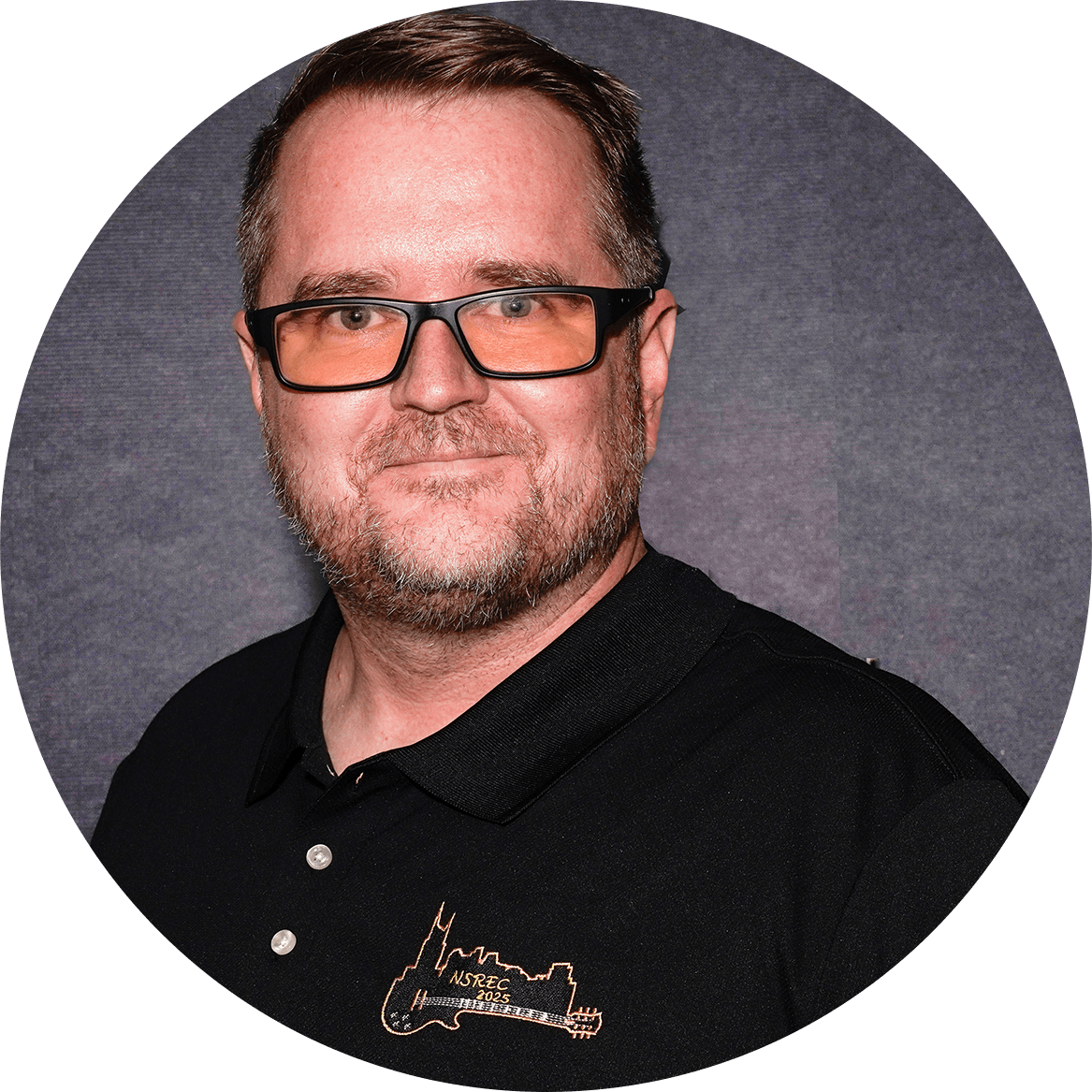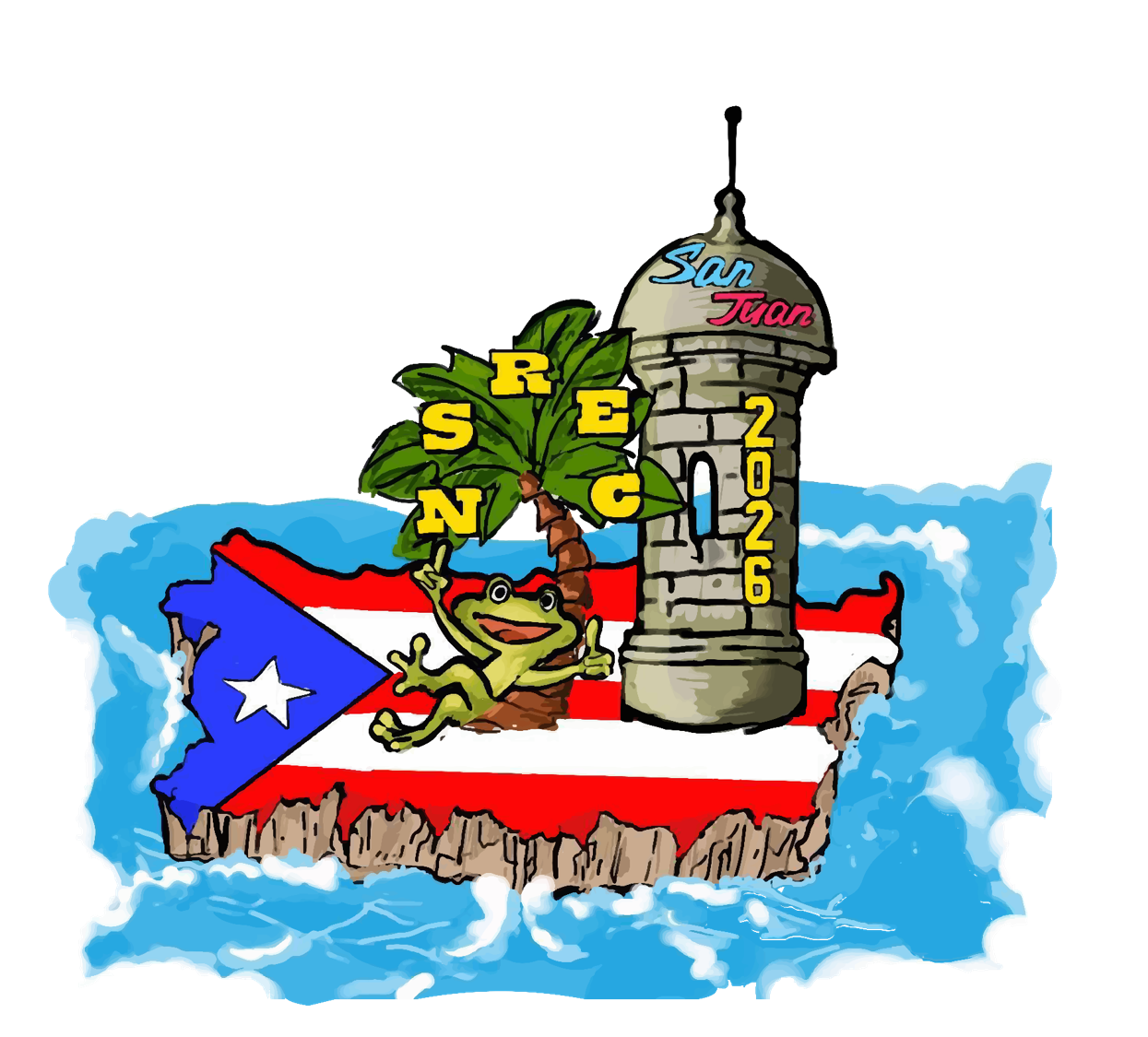Course Description
To Be Held Monday
July 14, 2025
NASHVILLE, TN
Radiation Effects in Modern and Emerging Technologies
Announcement for the 2025 IEEE NSREC Short Course
A short course, “Radiation Effects in Modern and Emerging Technologies”, will be presented at the 2025 IEEE Nuclear and Space Radiation Effects Conference. The radiation effects community is encountering changes in devices, circuits, and systems which will give both existing new opportunities for radiation hard electronics, but also create new challenges.
This course has been designed to provide both the background and fundamentals combined with the recent findings needed to understand this evolving field.
The short course is organized into four sections. Each has two subsections that start with the fundamentals resulting from decades of research, follow up with the application of these principles to radiation effects in modern and emerging technologies. The first two sections cover cumulative and transient effects in CMOS, starting with fundamentals and extending into modern technologies. The third section focuses on nonvolatile memory, covering fundamentals and extending the discussion to modern and emerging memories. Finally, the course concludes with a section on a discussion of radiation effects in systems.
The short course is intended for students, researchers and engineers working in the field of radiation effects and radiation hard electronics. In addition, will be relevant to device, circuit, and system designers and managers involved in implementing these systems. It provides a unique opportunity for IEEE NSREC attendees to benefit from the expertise of excellent instructors, along with a critical review of state-of-the-art knowledge in the field. Electronic copies of detailed course notes will be provided to each participant. Continuing Education Units (CEUs) will be available. For the interested attendees, an exam will be given at the end of the short course. The course is valued at 0.6 CEUs and is endorsed by IEEE and the International Association for Continuing Education and Training (IACET).
Continuing Education Units (CEUs)
Continuing Education Units (CEUs) will be available. For the interested attendees, an exam will be given at the end of the short course. The course is valued at 0.6 CEUs, and is endorsed by the IEEE and by the International Association for Continuing Education and Training (IACET).
Short Course Chair

Matthew Marinella
Arizona State University
Short Course Chair
On behalf of the 2025 IEEE Nuclear and Space Radiation Effects Conference (NSREC) Committee, I cordially invite you to attend the 46th IEEE NSREC Short Course. An outstanding group of technical experts will provide an in-depth discussion of radiation effects in traditional, advanced, and emerging devices and systems, including CMOS, nonvolatile memories, and systems based on these technologies.
PART I – CUMULATIVE EFFECTS IN CMOS
Prof. Hugh Barnaby, Arizona State University
Dr. Marc Gaillardin, CEA
The history of cumulative radiation effects on MOSFET and CMOS technologies traces back to the early days of semiconductor devices and their deployment in space and military applications. As CMOS technologies gained prominence in the 1960s and 1970s, researchers observed that ionizing radiation exposure could degrade the performance of these majority carrier devices. This discovery led to an increased focus on understanding the mechanisms of total ionizing dose (TID) radiation-induced damage, typically characterized by trapped charge accumulation in the dielectric and trap buildup at dielectric-semiconductor interface. By the 1980s, as CMOS integrated circuits became more complex, the effects of TID radiation on MOSFETs became a critical area of study, especially for space missions and other high-radiation environments. Early studies of TID effects concentrated on traditional bulk and silicon-on-insulator (SOI) technologies with an emphasis on ionization damage to the relatively thick gate oxides and even thicker buried oxides (used in SOI). As CMOS technologies scaled, the threats posed by ionizing radiation to ever thinner gates oxides began to diminish, leading to greater concentration on sidewall isolating dielectrics, particularly for bulk processes. In the first section of the short course, Dr. Marc Gaillardin of CEA will present the history of TID effects in these older technologies, with a review of the fundamental concepts associated with charge generation, recombination, carrier transport, defect creation and annealing, which are still important today.
The second part of the course, given by Prof. Hugh Barnaby, will focus on total ionizing dose radiation effects on modern/emerging CMOS, which have made or will make their way into mainstream integrated circuits. These advanced MOSFETs include ultra-thin body SOI (UTBSOI) devices (e.g., partially and fully depleted SOI); Fin-based Field Effect Transistors (FinFETs), and Gate All Around (GAA) Transistors. Recent investigations have shown some recognizable effects but also novel response characteristics that are unique to the very complex structural features, chemistry and material systems used in these advanced process nodes.
A top-level outline of the presentation is as follows:
Part A – Basics of Total Ionizing Dose (TID) Effects (Gaillardin)
- Insights into “non-perfect” materials
- Defect precursors and formation
- Oxide and interfacial defects
- Fundamental processes of TID Effects
- Characterization and modeling
- “Classical” Total Ionizing Dose effects in CMOS technologies
Part B – Total Ionizing Dose in Advanced CMOS (Barnaby)
- Technology Scaling
- Silicon-On-Insulator: the Road to Full Depleted MOSFET Technologies
- Partially Depleted SOI
- Fully Depleted SOI
- Non-planar Multi-gate MOSFET Technologies
- Fin-based Field Effect Transistors (FinFETs)
- Gate-All-Around Transistors (GAAFETs)
PART II – MODELING SINGLE EVENT EFFECTS IN CMOS
Dr. Scooter Ball, Institute for Space and Defense Electronics, Vanderbilt
Dr. Jeffrey Black, Sandia National Laboratories
Dr. Dennis (Scooter) Ball of Vanderbilt University, and Dr. Jeffrey Black of Sandia National Laboratories, will give a presentation on the multi-tooled approaches to modeling and simulation of single event transients in CMOS technologies. The course will cover the modeling tools being used: Technology Computer Aided Design (TCAD), radiation transport, circuit simulation, and fault injection/emulation. An example will be presented demonstrating how each of the tools are used to reproduce ground-based accelerator experimental data and then used to predict environmental rates. Further examples will be provided showing how single event modeling is done in emerging technologies like FinFETs and Gate All Around (GAA) FETs and what we have learned from modeling results.
A top-level outline of the presentation is as follows:
Part A – Single Event Effect Modeling Overview and TCAD (Ball)
- Introduction
- Goal – design a system to operate in a radiation environment
- Radiation response is a design variable
- Single event effects testing
- Single event effects mechanisms
- How radiation particles create carriers in the semiconductor materials
- How carriers create charge on circuit nodes
- Technology Computer Aided Design (TCAD)
- What it is and what it does
- 2D vs. 3D simulation
- Case study – Thorlabs FDS010 Photodiode
- Case study – Bulk vs. FinFET D Flip-Flop
Part B – Circuit Simulation, GEANT4, and Modeling a Heavy Ion Experiment (Black)
- Circuit simulation
- TCAD to circuit simulation
- Double exponential current source
- Single event upset simulation
- Parameter sensitivity analysis
- Case study – Feedback resistance hardening of memory cell
- Single event effect stimuli improvements
- Case study – Feedback resistance hardening of memory cell
- Case study – single event transient generation
- GEANT4 radiation transport
- Setting the size of the simulated world
- Semiconductor materials in the simulation
- Rare event weighting
- Number of particles to be simulated
- Modeling a heavy ion experiment
- TCAD to GEANT4 sensitive volumes
- GEANT4 and circuit simulation case study – Ions with critical charge threshold pre-characterized
- GEANT4 and circuit simulation case study – Ions generating charge to inject in circuit simulation
- Making a rate prediction
- Challenging case study – Simulating multiple node charge collection
Part C – System Level Modeling and Conclusion (Ball)
- System-level modeling – Bayesian network
- Conclusion
PART III – RADIATION EFFECTS IN NONVOLATILE MEMORIES
Prof. Marta Bagatin, University of Padova
Dr. Patrick Xiao, Sandia National Laboratories
Flash memories are ubiquitous in all digital systems today and are also attractive as non-volatile storage in space, because their capacity is unmatched by any rad-hard memory. In the first part of the short course, Prof. Marta Bagatin of the University of Padova will cover the effects of ionizing radiation in Flash memories. After reviewing the operation principles of these devices, total ionizing dose and single event effects will be illustrated. Possible short- and long-term phenomena following radiation exposure both in the memory cells and in the peripheral circuitry will be covered. The course will be supported by experimental data, analysis, and simulations, highlighting the impact of the technological evolution in a journey from traditional, planar devices to the most novel 3D integrated architectures.
In the second half of this short course, Dr. T. Patrick Xiao of Sandia National Labs will review the current understanding of the effects of ionizing radiation and displacement damage on emerging non-volatile memories such as magnetic memory, resistive memory, ferroelectric memory, and electrochemical memory. The physics of radiation effects in emerging memories is often fundamentally distinct from effects on commercial NAND flash and other CMOS electronics. For non-charge-based memories, this leads to very high intrinsic radiation tolerance, making them attractive for space applications. Furthermore, as the end of Moore’s law has slowed progress in computer processors, there has been significant research momentum to repurpose these emerging memories as low-power analog computational devices. However, using a traditionally binary memory as an analog memory can greatly increase radiation sensitivity. This course will review the operation and design principles of analog in-memory computing systems and how the accuracy of analog computing is affected by radiation effects.
A top-level outline of the presentation is as follows:
Part A – Radiation Effects in Flash Memories (Bagatin)
- Introduction to NV and Flash memories (planar and 3D)
- Radiation effects in planar Flash memories (floating gate and charge trap)
- TID in memory cells
- SEE in memory cells
- Effects in the peripheral circuitry
- Radiation effects in 3D NAND Flash memories
- TID in memory cells
- SEE in memory cells
- Scaling trends
Part B – Radiation Effects in Emerging Memories and Emerging Compute-in-Memory Systems (Xiao)
- Radiation effects in emerging analog computing systems
- Introduction to analog computing and AI applications
- Radiation characterization of analog in-memory computing systems
- Case study: analog computing with SONOS flash memory
- Mitigating radiation effects in analog systems
- Radiation effects in emerging NVMs
- Overview of emerging NVMs
- Ferroelectric memory
- Magnetic memory
- Resistive and electrochemical memory
PART IV – RADIATION EFFECTS IN SYSTEMS
Profs. Jeff Goeders and Mike Wirthlin, Brigham Young University
Prof. Fernando Fernandes, INRIA and Dr. Paolo Rech, Università di Trento
In the first part of this course, co-authored by Prof. Mike Wirthlin and Prof. Jeff Goeders, both of BYU will discuss radiation effects in modern, complex systems, with a focus on FPGAs, GPUs, and SoCs. Prof. Goeders will present the material. These types of commercial off-the-shelf (COTS) devices are increasingly being used in space and other radiation environments due to their high performance, low cost, and rich features. However, these devices are subject to various single-event effects (SEEs) and total ionizing dose (TID) effects, which can manifest as silent data corruption, system crashes and hangs, and permanent damage. The complexity of these devices makes it difficult to model and predict their radiation response, as the devices typically contain substantial internal state and complex interactions between components. Radiation testing of such systems requires substantial effort, time and expertise in developing appropriate test frameworks. This course will discuss both the radiation effects in these systems, as well as different strategies and lessons learned in how to effectively test and characterize these devices.
In the second half of this course, co-authored by Prof. Fernando Fernandes from INRIA, and Prof. Paolo Rech from the University of Trento. Prof. Fernandes will discuss the reliability challenges of adopting emerging post-Von Neumann architectures in safety-critical applications and space missions. While existing hardware architectures offer high computational performance, the memory bottleneck remains a limiting factor for energy efficiency and scalability since, in most applications, including AI, most of the power is wasted on data movement. New technologies such as processing in-memory and neuromorphic computing are emerging as alternatives to existing ones. Unfortunately, characterizing radiation effects and fault models on emerging hardware is challenging as conventional evaluation methods are not suitable for the task. The challenges include not only fault identification and correction but also designing radiation tests and qualification methodologies for emerging architectures.
A top-level outline of the presentation is as follows:
Part A – Radiation Effects in Modern Systems
- Motivations & Modern Devices
- Radiation Effects on Microelectronic Devices
- Memories
- Processors
- FPGAs
- Other Specialized Hardware
- Radiation Effects on Complex Heterogeneous Devices
- SEUs in complex devices
- Describing and cataloging failure modes
- Examples of capturing failure modes
- Radiation Testing of Complex Heterogeneous Devices
- Major Challenges
- Exercising Device Components
- Data Extraction Methods
- Case Studies & Results
Part B – Emerging Architectures
- Introduction
- Current and future AI applications
- New tools, old problems
- Deep learning systems complexity
- The data
- The algorithms
- The hardware
- Modern AI Systems Reliability
- Radiation effects on AI accelerators
- Modern accelerators radiation testing
- Efficient protection methods
- Conclusions

